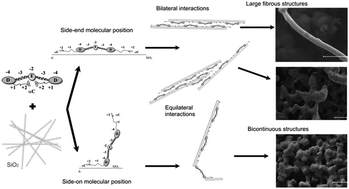Assessing structure and dynamics of fibrinogen films on silicon nanofibers: towards hemocompatibility devices
Abstract
An enhanced knowledge of the interaction of

* Corresponding authors
a Department of Chemistry, Universidad Nacional del Sur, INQUISUR-CONICET, (8000) Bahía Blanca, Argentina
b
Soft Matter and Molecular Biophysics Group, Department of Applied Physics, University of Santiago de Compostela, Santiago de Compostela, Spain
E-mail:
pmessina@uns.edu.ar
Fax: +54 291 4595160
Tel: +54 291 4595159
An enhanced knowledge of the interaction of

 Please wait while we load your content...
Something went wrong. Try again?
Please wait while we load your content...
Something went wrong. Try again?
N. Hassan, V. Verdinelli, J. M. Ruso and P. V. Messina, Soft Matter, 2012, 8, 6582 DOI: 10.1039/C2SM25489A
To request permission to reproduce material from this article, please go to the Copyright Clearance Center request page.
If you are an author contributing to an RSC publication, you do not need to request permission provided correct acknowledgement is given.
If you are the author of this article, you do not need to request permission to reproduce figures and diagrams provided correct acknowledgement is given. If you want to reproduce the whole article in a third-party publication (excluding your thesis/dissertation for which permission is not required) please go to the Copyright Clearance Center request page.
Read more about how to correctly acknowledge RSC content.
 Fetching data from CrossRef.
Fetching data from CrossRef.
This may take some time to load.
Loading related content
